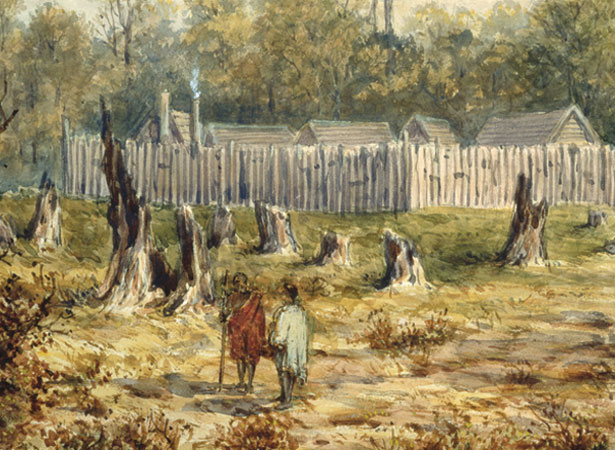
Disagreements over the validity of land purchases by the New Zealand Company led to a series of skirmishes between Māori and government troops in the Wellington region in 1846.
The prominent Ngāti Toa chief Te Rangihaeata backed local Māori who opposed European settlement in Hutt Valley. However, it was Te Mamaku of Ngāti Haua-te-rangi of Whanganui who led the attack on the British outpost at Boulcott Farm (now within the suburb of Epuni). He had come to Hutt Valley with 200 fighters to support both Te Rangihaeata and kin in the area.
The taua crossed the Heretaunga (Hutt) River at dawn and surprised the garrison. Six soldiers were killed and two more Europeans were mortally wounded in the attack, a demoralising blow to the settler community. When an armed patrol was ambushed near Taitā a month later, one soldier was mortally wounded. In July Governor George Grey responded by arresting Ngāti Toa’s paramount chief, Te Rauparaha. Te Rangihaeata withdrew from Battle Hill above the Horokiri Valley in mid-August, effectively ending Ngāti Toa resistance in the Wellington region.
Read more on NZHistory
An escalation of violence – War in WellingtonBoulcott's Farm NZ Wars memorial – Wellington memorials
External links
How to cite this page
'Eight killed in attack on Boulcott Farm', URL: https://nzhistory.govt.nz/page/eight-killed-attack-boulcott-farm, (Ministry for Culture and Heritage), updated 24-Dec-2020

Community contributions